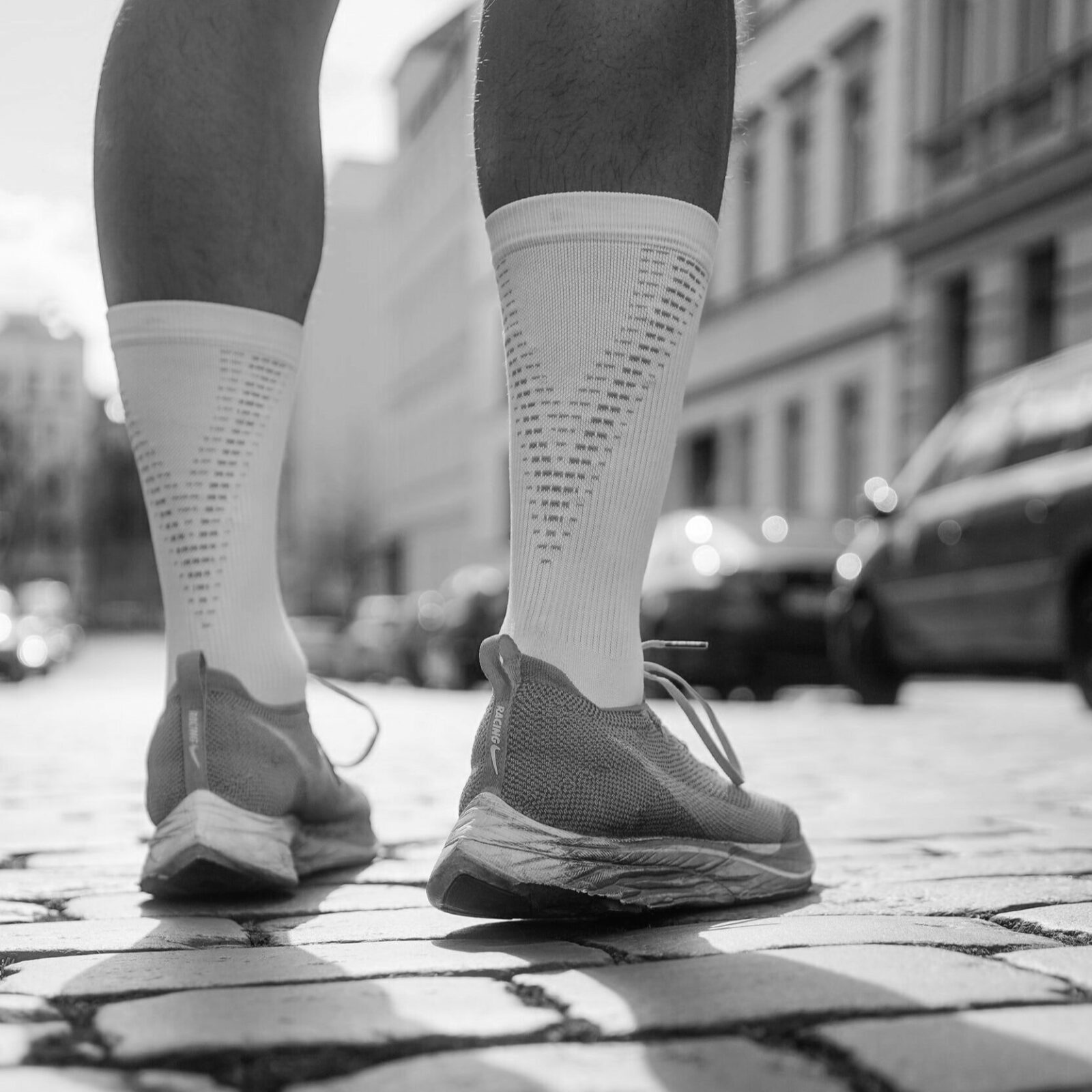GREG LARAIA, ATC & STREETS 101 FOUNDER.
Recovery is the part of your training cycle where fitness is gained. Obviously, we consider the race as the most important part, but recovery is where your training is absorbed and it will set you up for success during the next training cycle.
When we look at how the body moves, we look at the musculoskeletal system: muscles, tendons, bones, and ligaments. A recent study from the Journal of Athletic Training examined how tendons react after a marathon. They used ultrasound to look at tendon structure, specifically the Achilles, before, two days after, and seven days after a marathon. The tissue was characterized into 4 types: (1) Type 1: intact and aligned tendon bundles, (2) Type 2: less intact and waving tendon bundles, (3) Type 3: fibrillar or disorganized tissue, and (4) Type 4: a matrix with loose fibrils, cells, and fluid. All of the runners in the study were either experienced runners or actively training for a marathon.
The participants were tested pre-marathon to determine baseline structure and tendon Type and then at two and seven days after the marathon. Here is the wild part: two days postmarathon there were no observed changes on the ultrasound! Then, at seven days postmarathon, there were significant issue changes. What?! At seven days out, both the lower Achilles and midpoint of the Achilles tendon structurally changed from a type 3 (disorganized) and 4 (loose fibrils) bundle to a type 2 (less intact and wavy).
I know, I know… what does this mean?! So let’s clear it up. Initially, after the marathon, there were no significant tendon reactions, which indicates that the marathon load did not exceed the tendon’s max capacity for the trained runner. When the runners were re-tested a week out, the tissue structure changed: an increase in Type 2 and a decrease in Types 3 and 4. The tissue went through a structural change, reacting to try to restructure (heal itself) postmarathon. There was also a decrease in Type 1 (aligned/intact) tissue seven days out, which could be a reaction to the load on the Achilles during the marathon.
Here is the real kicker: all of the runners performed a short “activity” or run between the marathon and the postmarathon test seven days out. This is important to consider because this run or activity could affect the results of this study.
As runners we always want to be running… nobody likes a break. This study shows the importance of the healing process. It takes time and it is important to restore tissue to its proper state. You might feel ready, but the musculoskeletal structures need time to catch up. If runners give themselves proper rest post-race, the body will have time to return tissues to their normal states and reduce the chances of injury.
Rabello LM Albers IS van ARk M et al. “Running a Marathon-Its Influence on Achilles Tendon Structure”; Journal of Athletic Training. 2020;55(2): 176-180.

